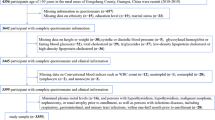Abstract
Acute and chronic cellular responses to changes in copper availability are not clear when these changes are mild to moderate, as what often occur in human daily life. The aims of the study were to develop an in vitro copper challenge in peripheral mononuclear cells (PMNCs) obtained from healthy individuals with different preconditioning copper treatments, and measure copper and iron content, and MT2A and TfR mRNA abundance after the copper challenge. (1) Screening using clinical and biochemical indicators defined healthy participants, who received 8 mg Cu/day (copper sulfate) or placebo for 2 months. (2) Mononuclear cells were obtained on days 0, 2 (acute changes), and 60 (chronic changes). (3) Cells were challenged with a 1, 5, and 20 μM Cu-histidine for 20 h, at T0, T2, and T60. Cells from both supplemented and placebo individuals showed a clear trend to increase copper content when there was more copper in the media. Increases were greater in the supplemented group, larger with 20 μM Cu (p < 0.02, one-way ANOVA), and mostly not significant when incubated with 5 μM Cu. By two-way ANOVA, differences were significant by treatment and by time (both p < 0.001). Differences between T0/T2 and T0/T60 were also significant (both p < 0.001). Changes of iron content were significant by treatment and time (two-way ANOVA); mRNA relative abundance of MT2A changed significantly and paralleled those of copper concentration, but TfR transcripts did not change. An in vitro challenge of PMNC showed specific changes of cellular copper and MT2A, while changes of iron content and TfR mRNA abundance were not consistent. PMNCs appear as good candidates to assess changes of cellular copper availability. That results differed after acute (T2) and chronic (T60) supplementation suggests that acute and chronic changes are handled differently by these cells.



Similar content being viewed by others
References
Kehoe CA, Turley E, Bonham MP, O'Connor M, McKeown A, Faughan MS, Coulter JS, Gilmore WS, Howard AN, Strain JJ (2000) Response of putative indices of copper status to copper supplementation in human subjects. Br J Nutr 84:151–156
Araya M, Olivares M, Pizarro F, Gonzalez M, Speisky H, Uauy R (2003) Gastrointestinal symptoms and blood indicators of copper load in apparently healthy adults undergoing controlled copper exposure. Am J Clin Nutr 77:646–650
Wilson SAK (1912) Progressive lenticular degeneration: a family nervous disease associated with cirrhosis of the liver. Brain 34:295–509
Mercer JFB, Livingston J, Hall B, Paynter JA, Begy C, Chandrasekharappa S, Lockhart P, Grimes A, Bhave M, Siemieniak D, Glover TW (1993) Isolation of a partial candidate gene for Menkes disease by positional cloning. Nat Genet 3:20–25
Turnlund JR, Jacob RA, Keen CL, Strain JJ, Kelley DS, Domek JM, Keyes WR, Ensunsa JL, Lykkesfeldt J, Coulter J (2004) Long-term high copper intake: effects on indexes of copper status, antioxidant status, and immune function in young men. Am J Clin Nutr 79:1037–1044
Milne DB, Johnson PE, Klevay LM, Sandstead H (1990) Effect of copper intake on balance absorption, and status indices of copper in man. Nutr Res 10:975–986
Institute of Medicine, Food and Nutrition Board (2001) Dietary reference intakes for vitamin A, vitamin K, arsenic, boron, chromium, copper, iodine, iron, manganese, molybdenum, nickel, silicon, vanadium, and zinc. National Academy Press, Washington
Araya M, Olivares M, Pizarro F, Méndez M, González G, Uauy R (2005) Supplementing copper at the upper level of the adult dietary recommended intake induces detectable but transient changes in healthy adults. J Nutr 135(10):2367–2371
Johnson WT, Johnson LA, Lukaski HC (2005) Serum superoxide dismutase 3 (extracellular superoxide dismutase) activity is a sensitive indicator of Cu status in rats. J Nutr Biochem 16:682–692
Broderius MA, Prohaska JR (2009) Differential impact of copper deficiency in rats on blood cuproproteins. Nutr Res 29:494–502
Bertinato J, L’Abbe MR (2003) Copper modulates the degradation of copper chaperone for Cu-Zn superoxide dismutase by the 26S proteosome. JBC 278:35071–35078
Prohaska JR, Geissler J, Brokate B, Broderius M (2003) Copper, zinc-superoxide dismutase protein but not mRNA is lower in copper-deficient mice and mice lacking the copper chaperone for superoxide dismutase. Exp Biol Med 228:959–966
Suazo M, Olivares F, Mendez MA, Pulgar R, Prohaska JR, Arredondo M, Pizarro M, Olivares M, Araya M, Gonzalez MA (2008) CCS and SOD1 mRNA are reduced after copper supplementation in peripheral mononuclear cells of individuals with high serum ceruloplasmin concentration. J Nutr Biochem 19:269–274
Weisstaub G, Medina M, Pizarro F, Araya M (2008) Copper, iron and zinc status in moderately and severely malnourished children recovered following WHO protocols. Biol Trace Elem Res 124:1–11
St Louis PJ (1991) Biochemical studies: liver and intestine. In: Walker WA, Durie PR, Hamilton JR, Walker-Smith JA, Watkins JB (eds) Pediatric gastroenterology disease. BC Decker, Toronto, pp 1363–1374
Olivares M, Pizarro F, de Pablo S, Araya M, Uauy R (2004) Iron, zinc and copper: contents in common chilean foods and daily intakes in Santiago City, Chile. Nutr 20:205–212
Sunderman FW Jr, Nomoto S (1970) Measurement of human serum ceruloplasmin by its p-phenylenediamine oxidase activity. Clin Chem 16:903–910
Danzeisen R, Araya M, Harrison B, Keen C, Solioz M, Thiele D, McArdle HJ (2007) How reliable and robust are current biomarkers for copper status? Brit J Nutr 98:676–683
Arredondo M, Cambiazo V, Tapia L, Gonzalez-Agüero M, Nuñez MT, Uauy R, Gonzalez M (2004) Copper overload affects copper and iron metabolism in Hep-G2 cells. Am J Physiol Gastrointest Liver Physiol 287:G27–G32
Louro MO, Cocho JA, Mera A, Tutor JC (2000) Immunochemical and enzymatic study of ceruloplasmin in rheumatoid arthritis. J Trace Elem Med Biol 14:174–178
Author information
Authors and Affiliations
Corresponding author
Rights and permissions
About this article
Cite this article
Arredondo, M., Espinoza, A., Pizarro, F. et al. Searching for Specific Responses to Copper Exposure: An In Vitro Copper Challenge in Peripheral Mononuclear Cells. Biol Trace Elem Res 142, 407–414 (2011). https://doi.org/10.1007/s12011-010-8819-6
Received:
Accepted:
Published:
Issue Date:
DOI: https://doi.org/10.1007/s12011-010-8819-6




